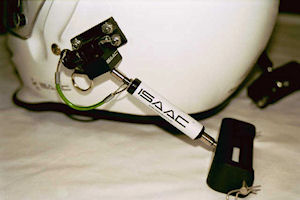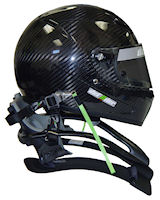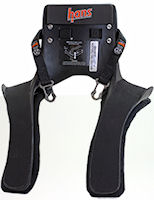
As of 2010, head and neck injuries were the number one cause of racing fatalities. To help reduce head and neck injuries, several companies have developed systems that reduce the amount of load placed on the head and neck during an accident. Although most clubs don’t require a head and neck system, it is something that I recommend you look into. A few manufacturers of head-and-neck systems include Isaac, DefNaider, Hans, and G-Force. There are several factors that determine which product best suits your needs. Factors to consider include how much it reduces head load, the product’s cost, the overall comfort of the system, and the clubs you’ll be racing with. Be sure to check the rules of the club(s) you will be participating with before purchasing a system to determine what requirements they may have in terms of certification. While I personally do not agree with the policy of only allowing H&N restraint systems having SFI certification, some clubs feel that this is the appropriate method of testing. Some of these products require that the system be secured and taken off while the driver is in the vehicle, while others require being put on and taken off outside of the vehicle. Both types have advantages and disadvantages. The product that is put on and taken off outside the vehicle may make getting into and out of the car more awkward or, in a worst-case scenario, get caught on something while trying to get out of the car in an emergency situation. The unit that needs to be taken off in the vehicle requires that you consciously remove the unit before exiting the car. Any of the above-mentioned products (and others as well) would help reduce the head load in an impact, even the least expensive units. The cost for a system typically ranges between $300 and $1000.
How Else Can You Make Racing Safer?
We all choose the club(s) we race with, the car we race, how we drive in races, and our overall approach to safety. No matter how passionate people are about club racing, it is still a hobby. There are no million dollar paychecks; the winner of each race only takes home a plastic trophy. This fact needs to be considered when out on the track.
What Exercises Can You do to Further Improve Safety?
One exercise you can practice is getting out of your racecar under various simulated conditions. Get into the racecar with your helmet on, put the window net up, secure your harness (and head restraint, if using one), and then time how long it takes for you to fully get out of the car. After you have done this a few times and are able to do it quickly, practice getting out of the car while holding your breath with your eyes closed. Another scenario to practice is if the door becomes stuck shut and you must crawl through the window. Just be careful when practicing this exercise! Hopefully it will never be necessary to rush getting out of the car due to an accident or fire, but if it does, having practiced these scenarios will prove to be beneficial. While doing these exercises, also include the step of turning off the racecar’s emergency kill switch. One of the many great things about these exercises is that it does not cost any money, just some time and effort.
Important notes: Each club has specific guidelines and specifications for safety items which are documented in the rulebook. It is important that you carefully review the rules before purchasing or installing any equipment.




